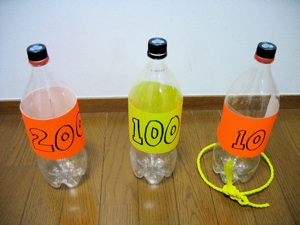Sunday School or Bible Clubs > Games > 12 Non-board games to review Sunday school lessons
Crown Game
How to make it
Cut out a gold or yellow paper crown for each team. Buy enough magnets that look like jewels for each team to put a jewel on the crown for each correctly answered question.
How to play
Divide the children into 2 or more teams. Alternate asking each team questions. The team with the most jewels on their crown wins.
True/ False Game
How to make it
Print out or write your own game cards. Use magnets or hooks to hold the cards in place.
How to play
Make sure all your questions are in the True/false format. This sounds more complicated than it is, so I will try to keep the instructions from getting complicate. it is well worth the effort because kids really do enjoy seeing the answers. The answers are just different ways to say right, or wrong, but each one is different, so each one is a surprise. You can download the ones shown above, or you can make up your own (a thesaurus comes in handy for finding right and wrong synonyms.) Just so you don’t get confused, first, hang all the true cards in a column on the left, and all the false cards in a corresponding column on the right (shown in left photo above.) Now hang the “correct” cards for each question on top of the true or false card--on top of the true if the answer to the corresponding question is true, or on the false if the answer is false. Now put all the “wrong” cards in the empty spots. If you leave it like this, all the answers are showing, so now put the True and False cards on top so the answer does not show--just a column of true cards, and another column of false cards (It should look like the photo on the left again.) Now you are ready to play the game. Ask a team the first question, and have them decide whether the answer is true or false. If they choose true, let them take off the true card to see if they got the answer right. If they chose false, let them take off the false card to see if they got the answer right. Since each “right” and “wrong” card is different, the kids really think it is fun to see what the word is going to be, and they always want to see what the “wrong” card says, too. Warning: if you make all the answers true, or all the answers false, the kids will figure it out pretty quickly, so be sure to mix it up.
Print this out on US letter or A4 size paper
Download True/False game (look for it in your folder
Velcro Darts
How to Make it
Glue the “claw” side of velcro in two strips around a ping-pong ball (both can be purchased at 100 yen stores.) Draw a fun target onto a piece of felt (also sold at 100 yen stores) and mark different parts of the design with various point values. Hang the felt target in the classroom.
How to Play:
Divide the class into 2 or more teams and alternate asking questions of each team. Once the question has been answered correctly, let one person on the team throw the “dart” ball at the target to determine how many points the question was worth. The team with the highest score wins.
Card games
How to make it
The cards in the photo above were purchased at an American Dollar store. You can make your own by photocopying pictures in books such as Big Picture Bible Time Line, and gluing them to card stock or covering with clear plastic sheets (contact paper) or laminating them.
How to use it
If you buy card games, follow the instructions. If you make your own, you can have the children see if they can put the cards in order, or match cards from the same story in a “Concentration” or “Go Fish” style game.


Mini Shuffleboard
How to Make it
Draw a shuffleboard onto a file folder or a piece of cardboard. Use coins or buttons for playing pieces. Flick the coin or button to determine the number of points awarded. If you want it to be more like real shuffleboard, cut a strip off of a toilet paper tube or paper towel tube and tape to an unsharpened pencil or disposable chopstick. Use this to shove the coin or pencil. This game is best used with a small class. If you want to do this with a large group, make several sets and divide the children into small groups.
How to Play:
Divide the class into 2 or more teams and alternate asking questions of each team. Once the question has been answered correctly, let one person on the team flick or push the coin/button at the target to determine how many points the question was worth. The team with the highest score wins.
Ring Toss
How to Make it
Option 1:
Tie rope into rings. Hold the knot to throw. Use plastic pop bottles (pet bottles) as targets. Mark the bottles with different points values.
Option 2:
Use a pegboard with different lengths of hooks. The rings can be rubber rings used for canning, or hair bands for fastening ponytails. Mark the hooks with different points values by hanging cards on the hooks
How to Play:
Divide the class into 2 or more teams and alternate asking questions of each team. Once the question has been answered correctly, let one person on the team throw the ring at the target to determine how many points the question was worth. The team with the highest score wins.
Tiddley-Pong (‘TiddletWinks and Ping-Pong combined)
How to Make it
Draw a Ping-pong table onto a file folder or a piece of cardboard. Use 2 plastic buttons or discs for the ball. Make one button jump over the “net” by pressing the edge of the button with anther button. Where the button lands determines the number of points awarded. This game is best used with a small class. If you want to do this with a large group, make several sets and divide the children into small groups.
How to Play:
Divide the class into 2 or more teams and alternate asking questions of each team. Once the question has been answered correctly, let one person on the team click buttons to make the button jump over the net. Where the button lands determines how many points the question was worth. The team with the highest score wins.
Jeopardy
How to Make it
Make a board with 3 or more rows of hooks. Make category cards and point cards for each category.
How to Play:
Divide the class into 2 or more teams. Teams can choose which category of question to answer, and how many points they want to try for. The higher the score, the harder the question. If they get the answer right, let them hold the point card. If they miss, the other team has a chance to answer. At the end of the game, the team can add up the points they are holding. The team with the highest score wins.

places
800
400
200
events
800
400
200
things
800
400
200
people
800
400
200

true
true
true
true
false
false
false
false

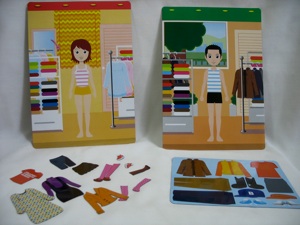


Magnet Games
How to Make it
Buy cute magnets that come with backgrounds, (at the hundred yen store) or buy sets of magnets and draw backgrounds on small white boards.
How to Play:
Divide the class into 2 or more teams. Each time a question is answered correctly, a team gets to choose an item from the pile to add to the collection on their board. This is especially good for younger children since they get excited about collecting items, and there is not an emphasis on who wins or looses. Below are more examples of magnets. Animal magnets are good to use when teaching creation or Noah and the ark.
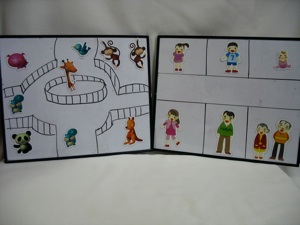
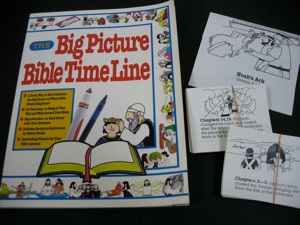

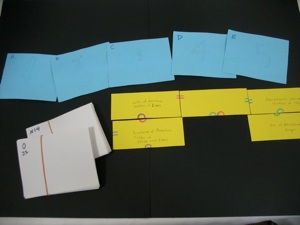

Sunday School or Bible Clubs > Games > 12 Non-board games to review Sunday school lessons
Build a Tower
How to Make it
Use your children’s blocks, or borrow them from a friend or the church nursery.
How to Play:
Divide the class into 2 or more teams and alternate asking questions of each team. Everyone on both teams writes the answer on a piece of paper. Each child with a correct answer can get a block to help build the team’s wall. The team with the tallest wall wins. You may need to make a rule that the wall is no narrower than 4 blocks, or they will end up making the wall one block wide--tall, but not much of a tower. This is a good game to use when teaching the Tower of Babel, Jericho, or Nehemiah.
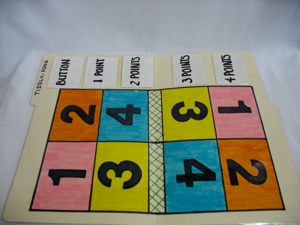
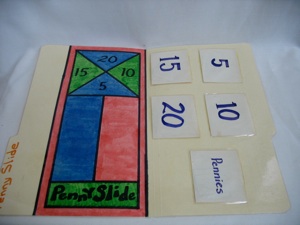


Grab-it
How to Make it
Buy these sticky hands in the toy section of hundred yen stores, or buy “Iky poo” in toy stores in America (Iky Poo does not have hands, but work just as well.) Make cards (see ideas below)
How to Play:
These hands are very sticky and stretchy--you use it a bit like a whip, and what ever it lands on the “hand” grabs. If it lands on a card, it springs back to you with the card. So decide if you want the cards to have the game questions, the scores for correctly answered questions, or answers to the questions. It’s so wacky that things could get kind of wild. Just deduct points to restore order!
Divide the class into 2 or more teams and alternate asking questions of each team. Let different people on the team “whap” a card--it all depends on what kind of card you choose--whap to choose a question first, or whap to choose a score after the question has been answered. The team with the most points wins.
